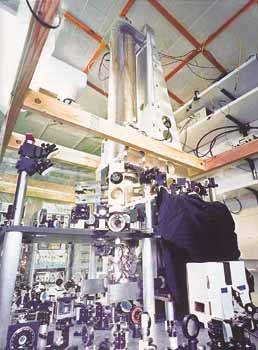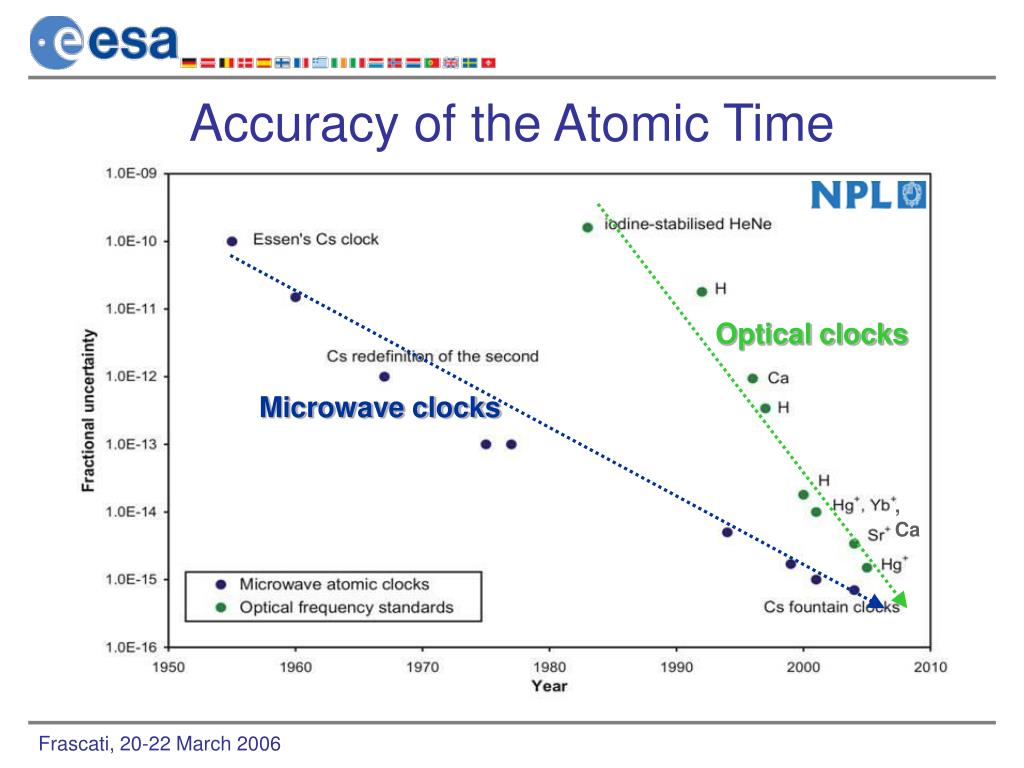
But atomic clock research at Columbia was halted during World War II. For his work, Rabi received the 1944 Nobel Prize in physics. That was close to the number that later would define the second. He first measured a cesium atom’s resonance frequency in 1940, estimating the frequency at 9191.4 megacycles. Rabi in 1939 informally discussed with scientists at the National Bureau of Standards his idea of applying the team’s molecular beam magnetic resonance technique as a time standard. Most of the concepts that led to atomic clocks were developed by physicist Isidor Isaac Rabi and his colleagues at Columbia in the 1930s. Early experiments in the 1930s and 1940s were made possible by rapid advances in quantum mechanics and microwave electronics. Thomson wrote in the second edition of the Elements of Natural Philosophy, published in 1879, that hydrogen atoms, sodium atoms, and others were “absolutely alike in every physical property” and “probably remain the same so long as the particle itself exists.”Ītomic clock experiments didn’t begin until nearly 60 years after the correspondence between Maxwell and Thomson. In 1879 he wrote to electricity pioneer William Thomson, suggesting that the “period of vibration of a piece of quartz crystal” would be a better absolute standard of time than the mean solar second (based on the Earth’s rotation) but would still depend “essentially on one particular piece of matter” and therefore would be “liable to accidents.” Maxwell theorized that atoms would work even better as a natural standard of time. Physicist James Clerk Maxwell was perhaps the first to recognize that atoms could be used to keep time. The circuits were accurate enough to measure and record variations in the Earth’s rotation, but they were still limited in performance and sensitive to environmental changes.

It kept time according to the mechanical resonance of vibrating crystals of piezoelectric material-which created electrical signals with a precise frequency. In the 1920s the quartz crystal oscillator circuit was invented. A BRIEF HISTORY OF TIMEKEEPINGįor thousands of years the reference for timekeeping was the Earth’s rotation rate-which was limited in accuracy. Administered by the IEEE History Center and supported by donors, the milestone program recognizes outstanding technical developments around the world.

This month the atomic clock received an IEEE Milestone. The clock kept time by tracking the microwave signals that electrons in atoms emit when they change energy levels. The clock helped redefine the duration of a single second, and its groundbreaking accuracy contributed to technologies we rely on today, including cellphones and GPS receivers.īuilding on the accomplishments of previous researchers, Harold Lyons and his colleagues at the U.S. National Bureau of Standards (now the National Institute of Standards and Technology), in Washington, D.C., began working in 1947 on developing an atomic clock and demonstrated it to the public two years later. A cesium atom always resonates at the same known frequency - that is what makes atomic clocks so precise.THE INSTITUTEThe invention of the atomic clock fundamentally altered the way that time is measured and kept. In a quartz clock, the quartz crystal is manufactured so that its oscillating frequency is close to some standard frequency but manufacturing tolerances cause every crystal to be slightly different, and things like temperature will change the frequency. This sort of accuracy is completely different from the accuracy of a quartz clock. Cesium-133 oscillates at 9,192,631,770 cycles per second. If you take any atom of cesium and ask it to resonate, it will resonate at exactly the same frequency as any other atom of cesium. The advantage of this approach is that atoms resonate at extremely consistent frequencies. According to Encyclopedia Britannica, the resonator is "regulated by the frequency of the microwave electromagnetic radiation emitted or absorbed by the quantum transition (energy change) of an atom or molecule." (See the National Institute of Standards and Technology for a diagram and description of the process.)

The accuracy of the clock is determined by the accuracy of the resonator at the specified frequency.Īn atomic clock is a clock that uses the resonance frequencies of atoms as its resonator. A digital clock uses either the oscillations on the power line (60 cycles per second in the United States, 50 cycles per second in Europe) or the oscillations of a quartz crystal as the resonator, and counts using digital counters. The pendulum usually resonates at a frequency of one swing per second. In a pendulum clock, the resonator is a pendulum and the gears in the clock keep track of time by counting the resonations (the swingings back and forth) of the pendulum.


 0 kommentar(er)
0 kommentar(er)
